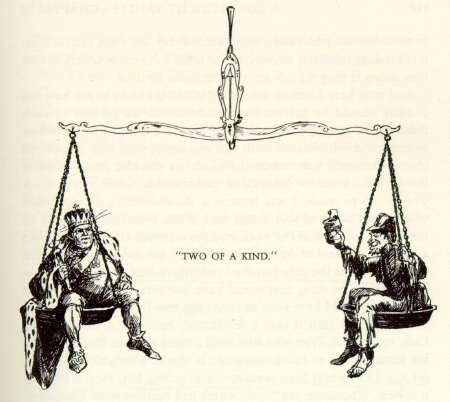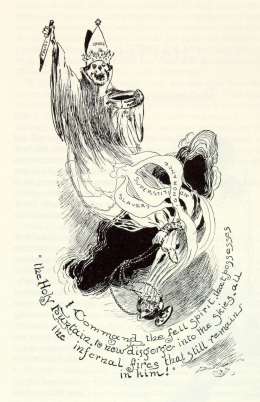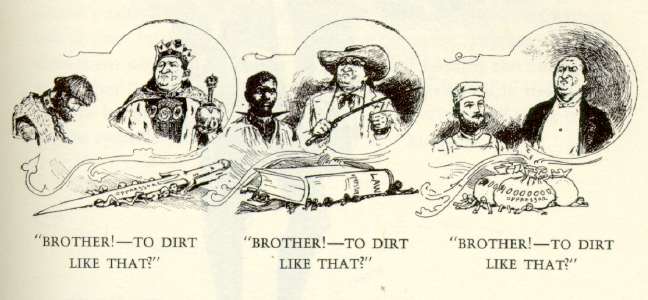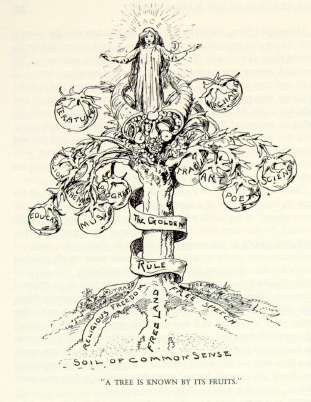Beard's "Reading" of the Novel
Both MT and his publicity talked about how fully
Beard's drawings "entered into the spirit" of the novel.
His wonderful illustrations often certainly ignore the
letter of the text. The first picture below, for example,
as Hall pointed out in the caption
he wrote for the sales prospectus, "illustrates a story
told of Abraham Lincoln" -- not a story told by Mark Twain!
The next drawing, for the chapter in which Hank restores
the fountain in the Valley of Holiness, ingeniously finds a
way to make the "miracle" Hank works on the occasion
consistent with his desire to undermine the Church -- but
Beard's consistency ignores the complexity, even the
contradictoriness of the text, where Hank's performance
clearly (though implicitly) serves the interests of the
Church. Similarly, Beard's eloquent illustration of the
relationship between Old World elitism and American forms
of prejudice and discrimination has little textual support.
Throughout Beard's drawings attack wealthy capitalists, but
Hank, as the text presents him, is much more like an
upwardly-mobile entrepeneur than a labor organizer. The
last drawing is Beard's representation of the 19th century
present as the flowering tree of progress, presided over by
"Peace." Again, Beard's drawings flatten out some of the
most provocative inconsistencies in the text, where Hank's
attempt to impose "progress" on the 6th century leads to
war, and weapons of mass destruction. Like many of Beard's
illustrations, none of the pictures on this page have any
textual basis. They illustrate ideas that Beard would claim
are inspired by the text. In comments he made at the time the novel
was published, even MT's understanding of his own novel
seems to have been influenced by Beard's illustrations.
|








